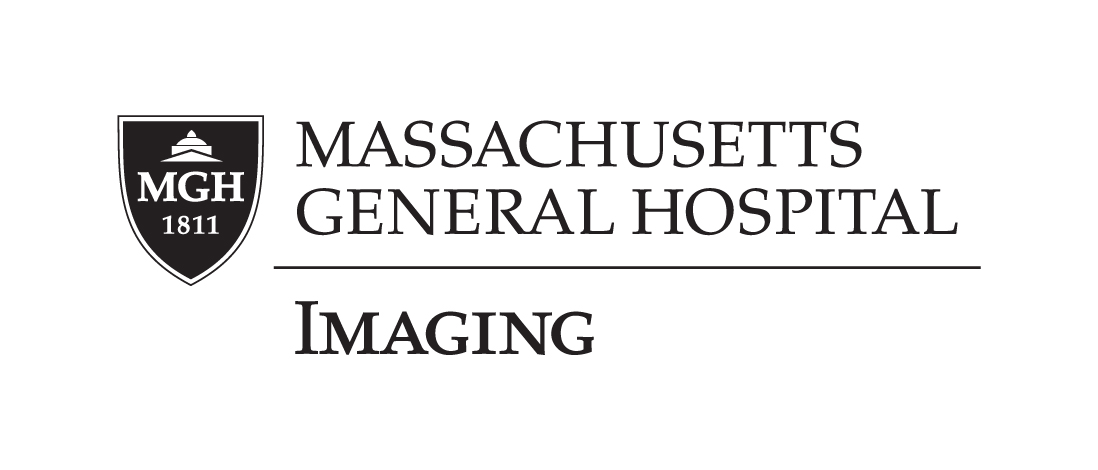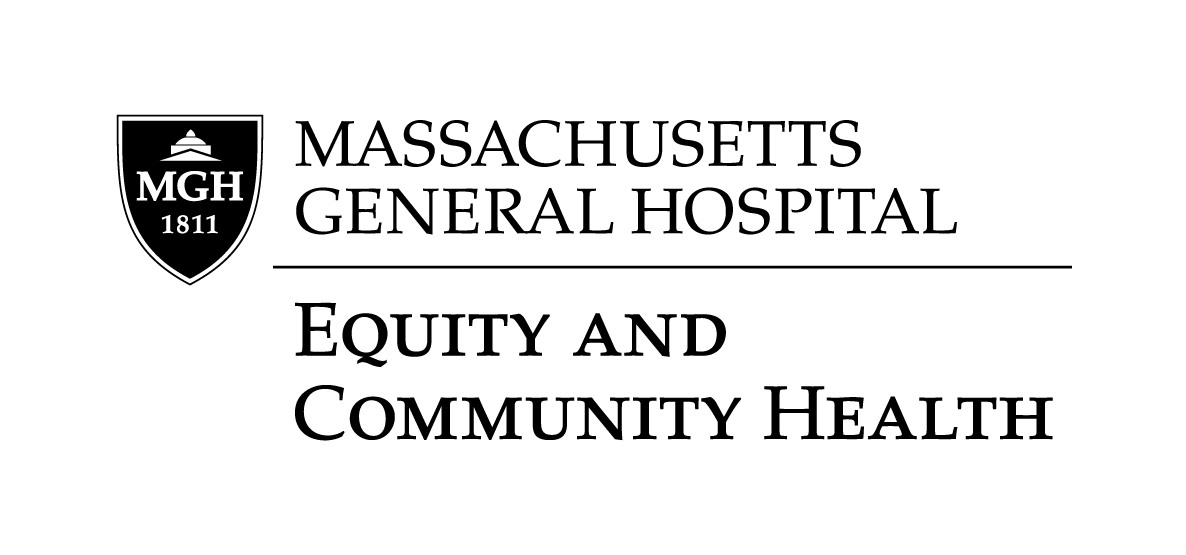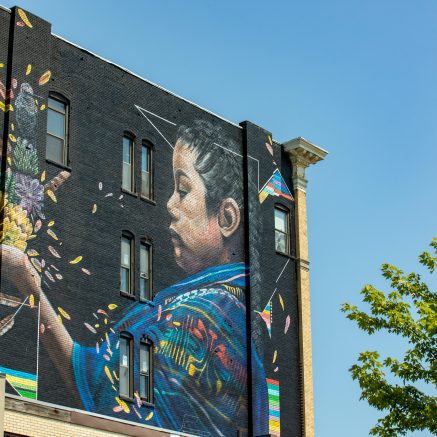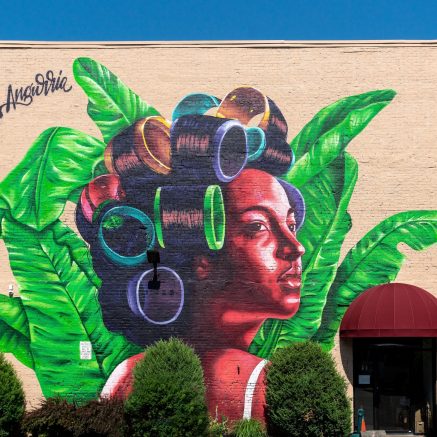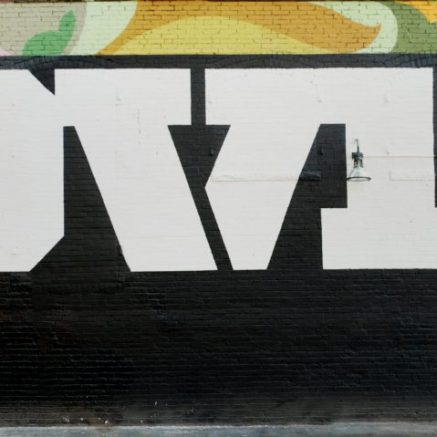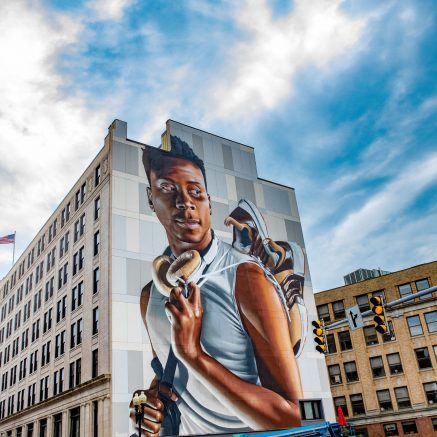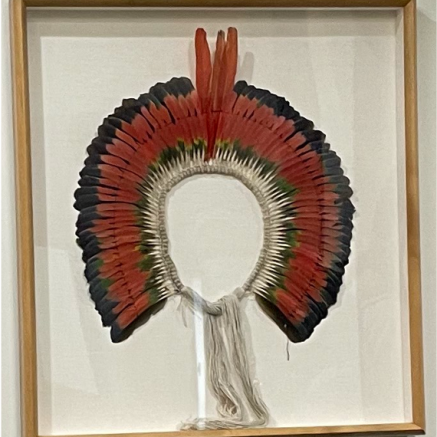The Protector
Symbolism plays a central role in Zayas’ work. The symbols in this mural represent the hardships we experience in life, the fighting spirit we hold within us, and things that protect us.
The woman in the painting, who looks strikingly similar to Zayas’ girlfriend, is holding an aloe plant as a symbol of protection. The aloe plant is significant in many Latin American cultures for its healing properties (it even keeps away mosquitos!). The rooster represents the fighting spirit that we draw on when life get tough, a nod to humanities imperfections as well as resilience. Similarly, the splintering wood in the piece is held together by a vine, a reflection of remaining whole in the presence of adversity. The robin symbolizes the soul, but also our guides; the spiritual aspects of our beings that accompany us and carry us through life. The skull represents our mortality as well as the hardships that happen in life. Finally, the woman in the piece, looking through a window, represents moving forward.
Out of all the walls presented to him for possible mural sites, Zayas chose this wall with its rough texture because it reminded him of the walls in Puerto Rico. It is located in a major thoroughfare to the city and painted on a building that had housed narcotic anonymous meetings and residential units for people going through narcotics recovery, likely an inspiration for his meditation on overcoming life’s struggles.
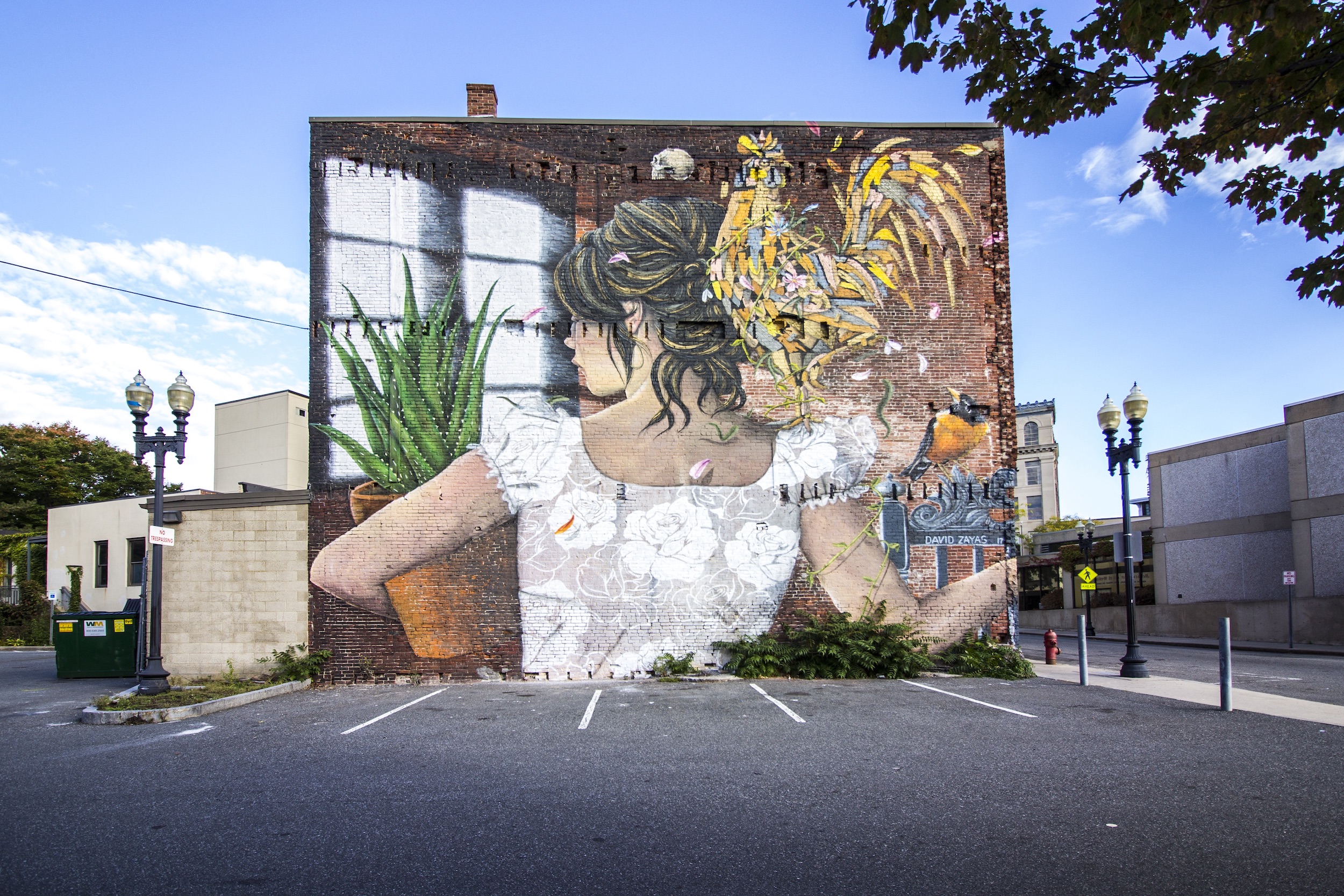
David Zayas, The Protector, 2017. Acrylic and latex on partially primed brick, 36 x 36 ft. Public art. ©David Zayas. All rights reserved.
Silvery beams illuminate a young woman’s face through a closed window as she looks, questioningly, at the brightness coming from within. In her strong, slender left arm, she cradles a terracotta pot containing an aloe. One wonders to whom she might be bringing the comfort of the aloe’s soothing gel and its appealing soft-spiky, tropical shape. A tiny skull floats above her head, symbolic in Latin and African American families of the ancestors who live on as memories and wisdom. She is wearing a white rose-patterned lace dress with puffed sleeves, which her grandmother would have liked too. Her luxuriant, black hair is piled up and we look upwards at her neck and back, which appear delicate, but determined and powerful. The rooster on her shoulder, who seems to be made of wood splinters and is encircled by a thorny vine, stands guard over her, watching with his opalescent eye. Together they fill the image in the shape of a cross. The woman’s right arm reaches to open a wrought-iron gate, and a perched robin, looks up as flower petals float down.
As we approach the woman, with Christ at her side, and his tiny, red-breasted friend, we see that they are painted on no ordinary wall. Hundreds of mother birds sing to their babies in tiny nests in the crevices between the bricks. When David Zayas painted this image in celebration of the lightness, strength, and resilience of the female spirit, and our connection with nature, he chose this crumbly, sunlit canvas. As well as sheltering these tiny creatures, it also formed part of a building in which, for many years, people struggling with substance use disorders held supportive meetings and received care and medical treatment. The building is now empty, and the street is quiet, but the wall remains; ready to provide shelter to the building’s future inhabitants.
Within Christianity, the robin is known to be the childhood friend of Jesus. The little bird, who frequently appears when a loved one is lost, is sometimes said to have received his ruby vest as a reward for protecting the Christ child from sparks of a fire while the holy family were traveling to Egypt. Another legend suggests that after Christ died on the cross, blood from His crown stained the bird’s chest.
In David Zayas’s mural, both the loveliness of the image and the power of its meaning, provoke one to ponder whether The Protector is the woman, or is it the rooster with his little robin friend, or the ancestors, or is it all of us in our roles as health providers and members of society to care for each other? The woman in this mural might be our mother, our daughter, our physician, or maybe she is an angel, a teacher or a nurse, protecting and nurturing those who depend on her. She may have lost someone she loves, or perhaps she is bringing some comfort to another person. In many cultures, woman is not the visible leader or head of the family, but as mother and daughter she is the protector and nurturer; the one who is there for us and makes the most important decisions.
For those us who assign the role of The Protector in this image to the woman, behind whom we stand, wrapped in her invisible lacy skirts, there is a troubling problem to consider. We cannot see the woman’s hands, which might depict the vulnerability and powerlessness experienced by so many women in our world. Much has been written and said, and much more needs to be heard and addressed, as misogyny and racial inequity continue to permeate our society. She represents the universal treasured value of all mothers, and yet mothers are not treated equally. In the USA, we do not have reproductive or maternal justice for all.
In all other high-income countries, pregnancy-related death is declining, but in the United States the maternal death rate has been rising for over 20 years; with persistent racial/ethnic inequities (read more).
The main causes are cardiomyopathy and other cardiovascular conditions, hemorrhage and other chronic medical conditions. Additionally, unintentional death from violence, drug overdose and self-harm are emerging causes that require medical and public health attention (read more).
Severe maternal mortality is higher among all racial/ethnic groups in comparison with non-Hispanic whites (read more), but highest among non-Hispanic black women. Racial disparities in obstetric care delivery indicate that there may be biases in health care delivery (read more).
These current disparities and the legacy of collective trauma in people’s lived experiences and those of their families and ancestors, contribute to a lack of trust in the health care system. When reflecting on the messages in this beautiful image, its celebration of the protective power of women, I find myself wondering if now, more than ever, it will be these very women who might be our saviors as well as our protectors. Now, more than ever, is the time to do all we can to protect The Protectors.

